Content
- What is cryo embryo transfer
- Indications and contraindications
- Preliminary diagnostics
- Basic conditions for the success of a cryoprogram
- Endometrial preparation techniques
- Natural Cycle Cryotransfer Preparation
- Natural cycle diagram
- Spontaneous or modified
- Preparing for cryo-transfer in an artificial cycle
- Artificial cycle diagram
- With or without GnRH agonists?
- Cryotransfer of embryos with hormone replacement therapy
- Which method should you choose?
- 4 reasons to choose cryo transfer over the natural cycle
- Embryo transfer stages
- Defrosting
- Embryo quality assessment
- Assisted Hatching
- Transfer process
- What to do after cryotransfer
- Feelings by day after embryo planting
- Why doesn't the embryo take root after cryotransfer?
- Transfer cost
- Cryo embryo transfer video
Cryo-transfer of embryos into the uterine cavity does not require complex preparatory measures for this procedure. The transplantation of biological material is carried out under the conditions of a woman's natural menstrual cycle, or with the use of hormonal stimulation of the endometrial layer of the genital organ.
What is cryo embryo transfer
Cryotransfer is a modern reproductive technology program that involves replanting previously frozen embryos. Fertilized eggs undergo deep cryopreservation for a long period. Shock-frozen embryos do not lose their quality cells, and their survival rate after thawing is equal to 75%.
It is believed that cryotransfer of fertilized cells is a more effective reproductive procedure, which does not require lengthy preparation. For example, the IVF program requires mandatory stimulation of the superovulation phase with further embryo transplantation.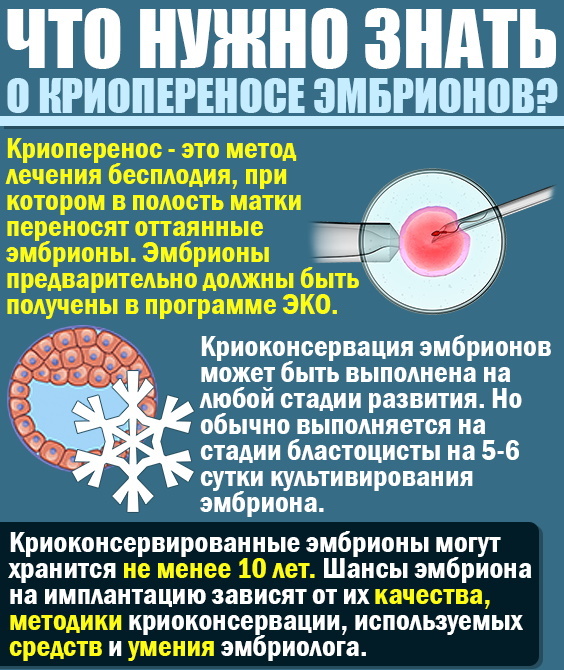
The advantage of a reproductive cryotransfer program is that the introduction of a fertilized cell into a woman's uterus is possible under the conditions of her natural menstrual cycle. In this case, additional hormonal-based medications are not required, which accelerate the onset of the ovulation phase.
The cryo transfer program makes it possible to preserve embryos obtained from the own germ cells of a married couple who are laying pregnancy at a later date, but at the same time wants to reduce the risks of infertility due to age-related changes in the body and a decrease fertility.
Indications and contraindications
The main indication for cryo-transfer of embryos is previously unsuccessful attempts at pregnancy using the IVF procedure.
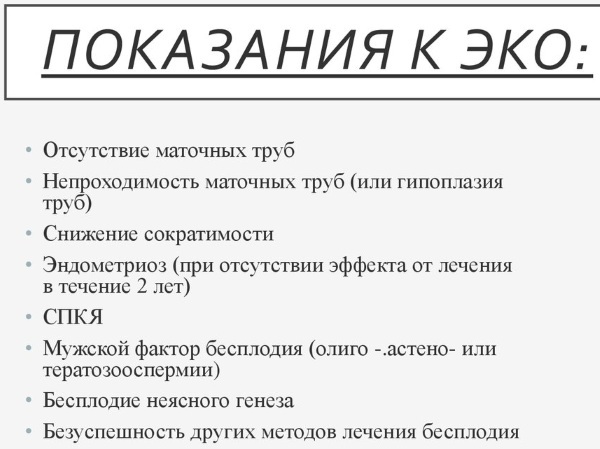
Also, this reproductive technology is prescribed in the following cases:
- a woman is contraindicated in the transplantation of a fertilized egg immediately after the completion of the stage of hormonal stimulation of the internal genital organs;
- in the future, a married couple plans to have joint children, but postpones conception under the influence of certain life circumstances;
- after the IVF procedure, a certain number of viable embryos of good quality remained, which can be additionally used in case of unsuccessfully performed extracorporeal fertilization;
- age-related changes are observed in the woman's body, which reduce the fertility rate, minimize the potential probability of getting pregnant naturally or using the IVF program.
Cryotransfer of embryos is considered a completely safe reproductive technology.
Despite this, this procedure also has the following contraindications:
- the woman has been diagnosed with severe mental illness and neurological disorders, which may worsen in the process of carrying a child;
- the uterus and other organs of the woman's reproductive system have clear signs of an abnormal structure, as well as any other pathologies of a congenital or acquired nature, which can cause miscarriage, opening of the uterine bleeding;
- in the organs of the female reproductive system, cancerous or benign neoplasms have been diagnosed, requiring surgical removal, or a course of taking medications;
- various kinds of hormonal imbalance, in which it is impossible to carry a healthy child;
- the period of recovery of the body after a previously suffered ARVI, severe and prolonged diseases of internal organs, injuries of the musculoskeletal system;
- short-term increase in body temperature caused by a decrease in the protective functions of the immune system;
- depletion of the body, which has arisen due to the abuse of dietary norms, or chronic diseases of the gastrointestinal tract, in which the process of full assimilation of nutrients is disrupted;
- previous trauma to the organs of the female reproductive system, the consequences of which exclude the possibility of childbearing.

Contraindications to the use of embryo cryotransfer are determined at the stage of diagnostic examination. Women over 35 years old who have previously had chronic diseases of the reproductive organs, there is a high risk of complications due to pathologies of the anatomical structure uterus.
Preliminary diagnostics
Preparing for embryo cryotransfer is an important stage of reproductive technology that all women who want to get pregnant using this method go through.
To make sure that there are no contraindications to the use of cryotransfer of fertilized eggs, the patient is prescribed the following types of diagnostics:
- delivery of capillary, venous blood, as well as morning urine for their study for clinical and biochemical parameters;
- selection of gynecological smears from the mucous membrane of the genitourinary system to determine strains of microflora;
- conducting tests for TORCH-complex of infectious diseases that are dangerous for the female body, as well as the developing fetus;
- diagnostics of the female reproductive system for its infection with bacterial sexually transmitted microorganisms;
- Ultrasound of the ovaries, uterus, thyroid and mammary glands;
- an electrocardiogram to obtain general information about the functional state of the cardiovascular system, on which additional physical activity will be created during pregnancy;
- mammography for patients over 35 years of age.
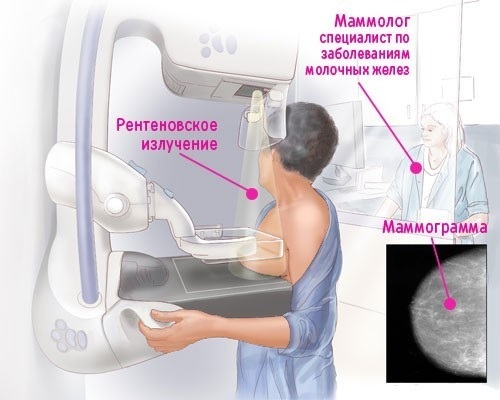
Preparation for cryo-transfer of embryos includes the obligatory donation of blood for the determination of the Rh factor. All patients undergo fluorography to exclude the factor of infection of the body with pulmonary tuberculosis.
Basic conditions for the success of a cryoprogram
The following conditions for a successful cryoprogram are distinguished, which increase the chances of survival of previously frozen embryos:
- transplantation of biological material was performed strictly 6-7 days after the onset of ovulation (this period of time is considered the most productive, and is also called the "transplant window");
- at the stage of preparation for the reproductive procedure, the clinic staff performed a biopsy of the endometrial layer uterus, according to the results of which no critical pathologies;
- 6-7 days after the onset of ovulation, the optimal layer of the endometrium of the woman's uterus is at least 9-11 cm (this the physiological indicator is determined using ultrasound diagnostics, which is carried out at the stage of preliminary preparation);
- the patient strictly follows all the instructions of the reproductive physician, does not consume alcoholic beverages, drugs and tobacco products;
- the woman has a regular menstrual cycle;
- the organs of the patient's reproductive system are fully developed, and according to the results of preliminary diagnostics, no signs of their pathological state were revealed.
The chances of a successful cryoprogramme increase if embryo cryo-transfer is not carried out. only within a strictly designated period of the menstrual cycle, but also performed by a qualified doctor-embryologist. The doctor of this profile conducts basic manipulations for the reconservation of previously frozen embryos with their further implantation into the uterine cavity.
Endometrial preparation techniques
There are several proven reproductive techniques that are used to pre-prepare the endometrial layer of the uterus.
Natural Cycle Cryotransfer Preparation
Cryotransfer of embryos is carried out under the conditions of a woman's natural menstrual cycle, or the reproductive procedure is carried out using modified techniques.
Natural cycle diagram
In the case of a natural cycle regimen, the patient does not need additional hormonal stimulation. In this situation, embryo implantation occurs 6-7 days from the ovulation phase.  The natural cycle diagram is indicated for use by women with a stable hormonal background, whose age does not exceed 35 years.
The natural cycle diagram is indicated for use by women with a stable hormonal background, whose age does not exceed 35 years.
Spontaneous or modified
The modified embryo cryotransfer scheme is indicated for patients of the following categories:
- women over 35;
- the patient has an irregular menstrual cycle;
- signs of decreased indices of the follicular reserve were found;
- an imbalance in female sex hormones is the reason for the lack of ovulation.

Preparation for cryo-transfer of embryos in a modified scheme involves the administration of drugs on a hormonal basis. Using the method, a woman's menstrual cycle is simulated so that ovulation is not spontaneous, but controlled by medications. The onset of a favorable period for embryo implantation is determined by the method of laboratory tests of the patient's blood and urine.
Preparing for cryo-transfer in an artificial cycle
A distinctive feature of preparation for cryo-transfer of embryos in an artificial cycle is that the hormonal background of a woman is completely controlled by drugs. This method is indicated for patients with non-functioning ovaries.
Artificial cycle diagram
The creation of an artificial menstrual cycle for a woman involves the implementation of drug preparation in accordance with the following scheme:
- The patient is prescribed a course of taking medications based on estrogens, which stimulate the growth of the endometrial layer of the uterus.
- After completing the preparation of the inner membrane of the genital organ, the hormone progesterone is introduced into the drug course of the woman, which maintains the stability of the luteal phase.
- Upon reaching a stable hormonal balance favorable for implantation, a date for cryo-transfer of embryos is set.

Preparing the endometrium for cryo-transfer of embryos
From time to time, situations arise when doctors fail to achieve stabilization of the artificial cycle. In this case, drugs for additional stimulation of the ovaries are included in the general course of drug therapy.
With or without GnRH agonists?
The use of drugs from the group of GnRH agonists is indicated for women who are at risk of fetal freezing due to a premature increase in the level of luteinizing hormone. Medicines in this category simultaneously minimize the risk of severe complications in women receiving hormonal stimulation of ovarian function.
The decision to use GnRH agonists is at the discretion of the fertility specialist who performs the cryotransfer. fertilized eggs, and also controls the further course of pregnancy after their successful implantation.
Cryotransfer of embryos with hormone replacement therapy
Preparation for cryo-transfer of embryos with hormone replacement therapy is carried out according to the principle of creating an artificial cycle. A woman takes estrogen-based medications until her endometrium is ready to receive a fertilized egg.
After the completion of the implantation procedure, the patient is prescribed progesterone therapy to increase the percentage of fetal survival. Taking medications containing this hormone continues throughout the first trimester of pregnancy. Depending on the general dynamics of intrauterine development of the fetus, progesterone therapy can be carried out up to 20 or 34 weeks of pregnancy. For example, if there is a high rejection rate of cryo-implanted embryos.
Which method should you choose?
The doctor chooses the scheme for cryopreservation of embryos, taking into account the state of the patient's reproductive system, the stability of her hormonal background and the regularity of the menstrual cycle.
4 reasons to choose cryo transfer over the natural cycle
There are the following preferential factors, according to which cryo transfer of embryos is more preferable than conceiving a child in the natural cycle:
- a high percentage of the likelihood of an early pregnancy;
- the ability to choose embryos with the best quality characteristics;
- minimal risk of complications in the first weeks of pregnancy, since the woman undergoes a comprehensive examination of the body for stages of preliminary preparation for cryo-transfer, and is also observed in doctors after implantation of a fertilized eggs;
- high probability of successful embryo engraftment, even in women of late reproductive age.
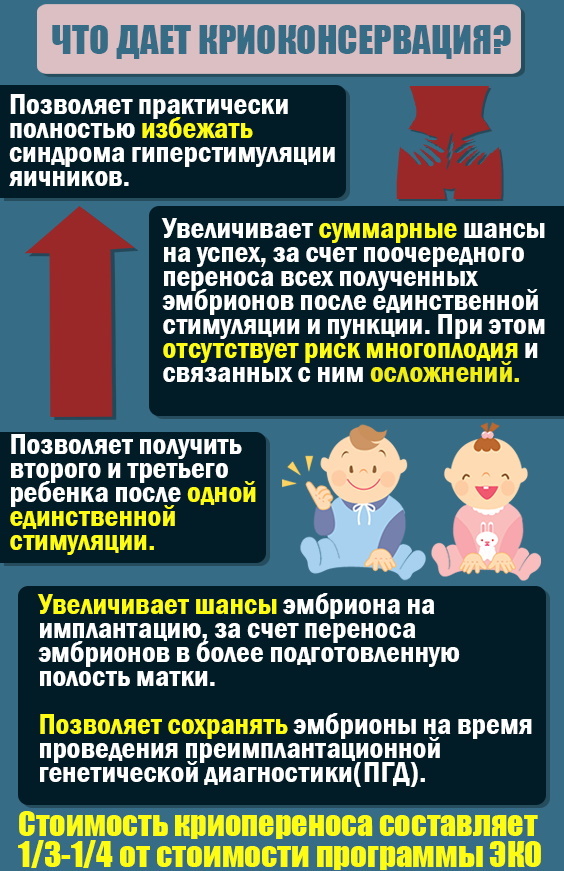
Despite the large number of qualitative advantages of cryotransfer, most fertility doctors recommend using this technique if there are direct medical indications. For example, in the absence of the ability to conceive a child in a natural way, and previous IVF attempts have not been successful.
Embryo transfer stages
Cryo transfer of embryos is carried out in several stages. This process is handled by an embryologist together with a reproductologist.
Defrosting
After removing the fertilized cell from the chemical solution, the embryo is slowly thawed in specially created laboratory conditions. At this stage, all manipulations are carried out with the utmost care so as not to damage the tissue of the embryo.
Embryo quality assessment
After complete thawing of the fertilized egg, the reproductive physician assesses its physiological state, checks the quality characteristics, as well as the viability of the biological material. 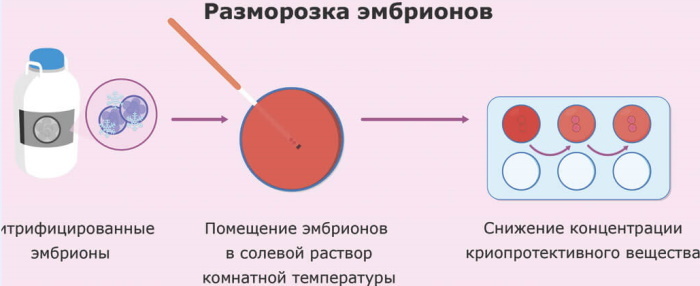 In the presence of positive results of the study, the embryo prepares for the further stage of implantation.
In the presence of positive results of the study, the embryo prepares for the further stage of implantation.
Assisted Hatching
The assisted hatching method is a method of reproductive technology, during which the doctor partially damages the outer shell of the embryo. In this case, a mechanical method is used, or chemicals are used. Assisted hatching is necessary to facilitate the implantation of a fertilized cell into the structure of the endometrium of the uterus.
Transfer process
Cryotransfer of the embryo is carried out under sterile conditions in the manipulation room. The table below describes the algorithm of actions of a reproductive physician in the process of implantation of biological material.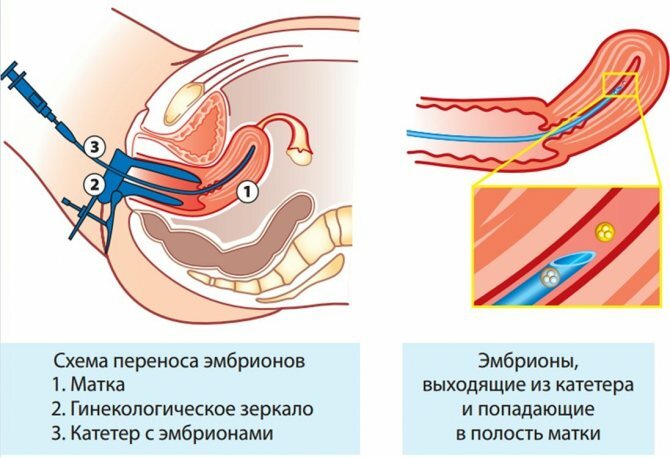
| Embryo cryotransfer process | Doctor's actions |
| Stage 1. Preparation of the working area. | The doctor fixes in the cavity of the woman's birth canal gynecological instruments for expanding the walls of the vagina with the provision of unhindered access to the uterus. |
| Stage 2. Catheter insertion. | A catheter is inserted into the cavity of the genital organ, which performs a transport function. |
| Stage 3. Cryo transfer of an embryo. | The doctor uses a special syringe to take a fertilized egg, which is moved into the uterine cavity through the canal of a catheter inserted into the genital organ a few minutes earlier. |
The embryo cryotransfer process is completely painless. At the time of these manipulations, the woman is in the gynecological chair, and after they are completed, she can independently leave the walls of the clinic.
What to do after cryotransfer
After completing the cryotransfer procedure, the following recommendations must be followed:
- take progesterone-based drugs that have been prescribed by a doctor;
- avoid hypothermia;
- eat well;
- do not lift weights;
- avoid public places with a large crowd of people, as these are potential sources of infection;
- refrain from sexual intercourse.
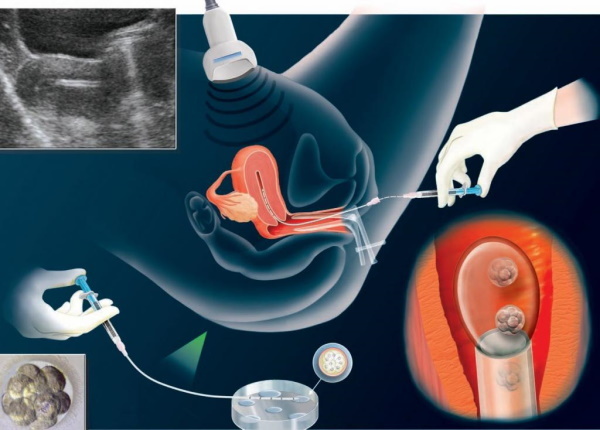
A woman who has undergone the embryo cryo-transfer procedure must arrive for an examination at a reproductive physician at a strictly appointed date and time. This is necessary for effective control of egg implantation, as well as the timely adoption of measures to prevent rejection of the fetus.
Feelings by day after embryo planting
In the first 1-5 days after egg implantation, most women do not experience any sensations.
After 10-15 days from the date of embryo transfer, the following symptoms may appear:
- heaviness in the lower abdomen;
- swelling of the nipples and a feeling of mild pain in the tissues of the mammary glands;
- mucous vaginal discharge without signs of a pungent odor;
- deterioration or increase in appetite;
- nausea in the morning;
- drowsiness.
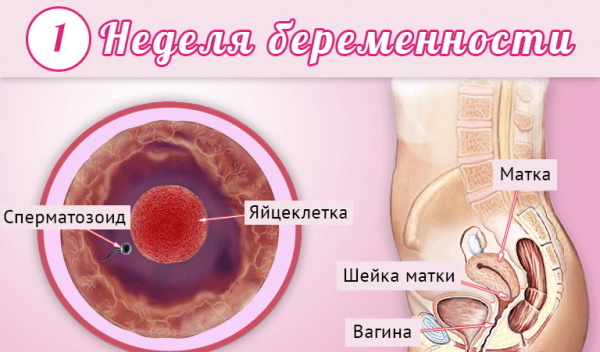
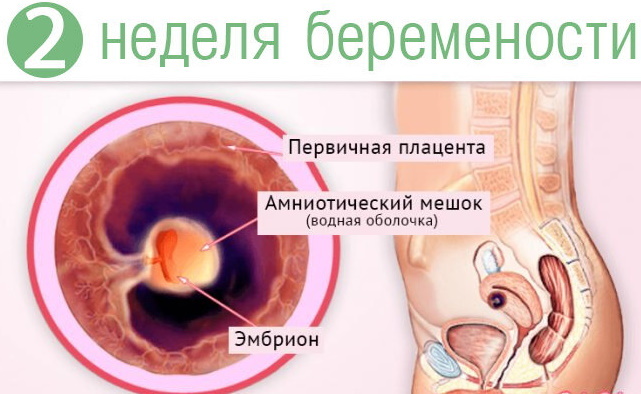
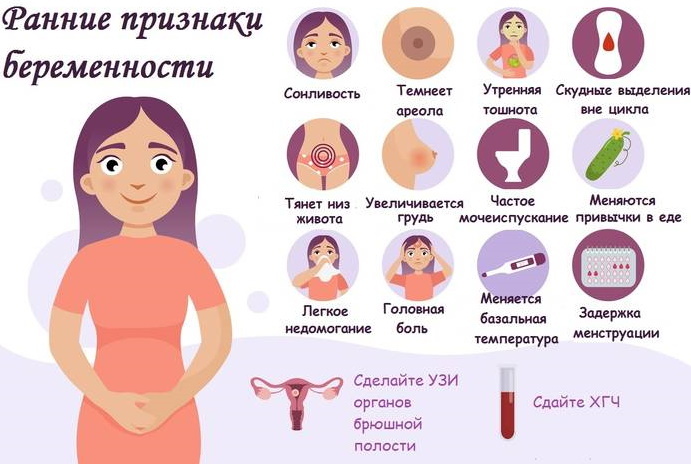
To confirm the fact of successful cryo transfer of the embryo and the onset of pregnancy, it is necessary to use the express testing method, or donate blood to determine the level of beta-hCG hormone.
Why doesn't the embryo take root after cryotransfer?
In medical practice, there are cases when the procedure for cryo-transfer of embryos ends with the rejection of biological material.
A similar result of implantation occurs under the influence of the following factors:
- the endometrium of the patient's uterus was not yet ready for transplantation of a fertilized egg;
- in the process of defrosting the embryo, it was damaged (a similar result is possible for physiological reasons or because of an unintentional error of a reproductive physician);
- not enough time has passed since the last attempt at implantation, during which the woman's reproductive system has not yet had time to recover;
- non-observance of the recommendations of the reproductive physician regarding the lifestyle after replanting a fertilized egg;
- the development of an infectious disease or intoxication of the body, which arose soon after embryo implantation;
- anomalies of intrauterine development of the fetus in the early stages of pregnancy, when the physiological mechanisms of its rejection are triggered.
The reasons for the unsuccessful cryo transfer of the embryo are established after a preliminary examination of the patient. In the presence of pathological factors, appropriate therapy is prescribed to eliminate them. For example, if the patient had inflammatory processes in the organs of the reproductive system, or a hormonal imbalance was detected.
Transfer cost
The average cost of implanting an embryo into the uterine cavity using cryo transfer technology is 50,000 rubles.
Cryotransfer is a modern reproductive technique that transplants previously frozen embryos into the patient's uterus. Implantation of biological material is carried out 6-7 days after the onset of ovulation. Preparation for the cryo transfer procedure includes a comprehensive examination of the female body.
If necessary, the patient is prescribed stimulating therapy with hormonal drugs. The cryo transfer program of a fertilized egg begins with the stage of defrosting the embryo, checking viability of biological material with its further implantation in the cavity of the genital organ women.
Cryo embryo transfer video
Cryotransfer. Stages, types, preparation:



